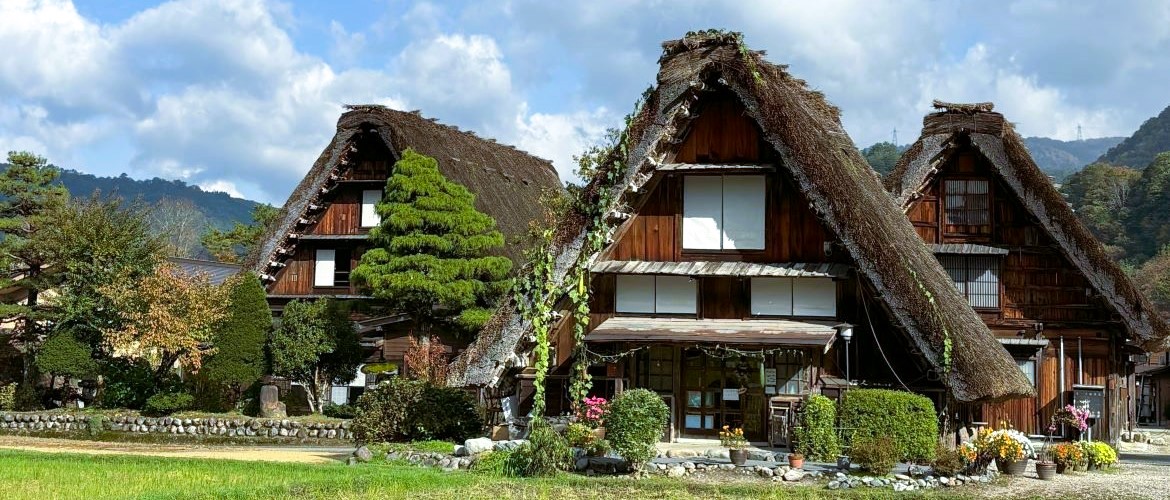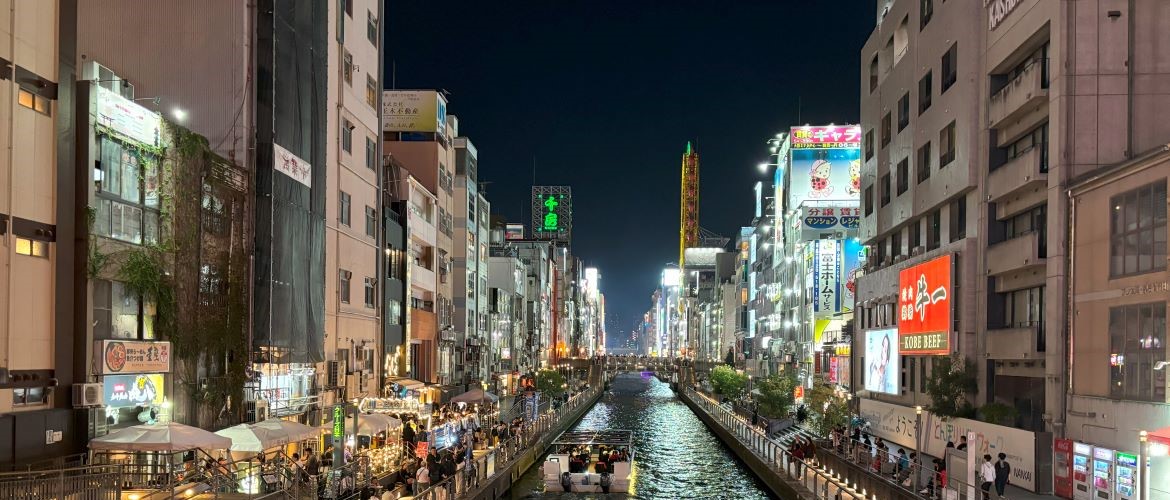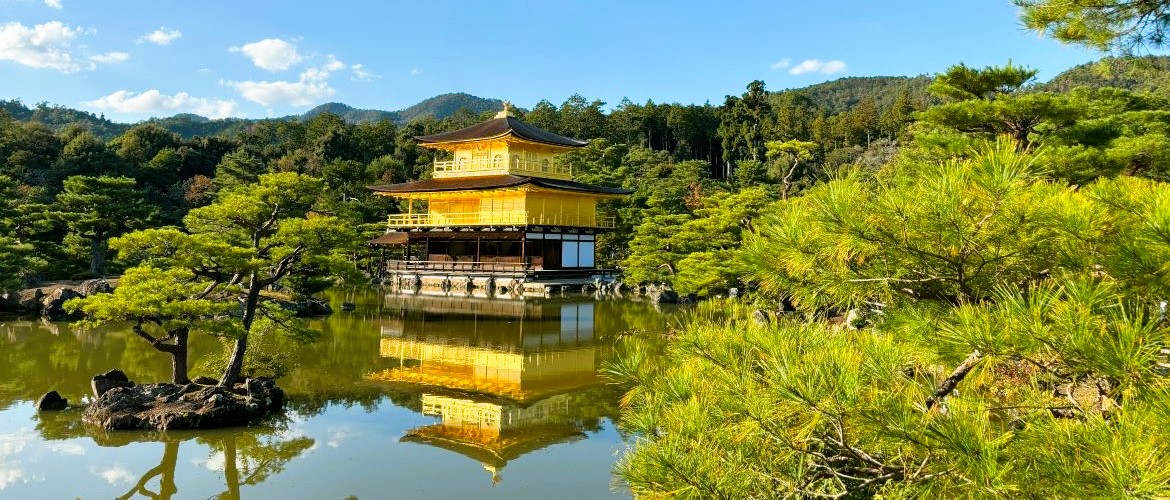Itinerary valid for October 2025 onward. Scroll down for dates and hotel list.

Tokyo – Kanazawa – Takayama – Shirakawa-go – Kyoto
Focusing on culture, history, and natural beauty, this itinerary offers an intimate exploration of Japan’s most iconic destinations, ensuring a personalized and immersive experience. With expert guides, comfortable accommodations, and thoughtfully curated activities, this tour promises to be a memorable introduction to the Land of the Rising Sun.
Important Features
- Small group size – average 15, maximum 20
- Outstanding professional guides
- First-class accommodations
- Inter-city travel by shinkansen bullet train
- High-quality Japanese and Western cuisines

Tour Itinerary
Meal Code: B = breakfast / L = lunch / D = dinner
Day 1/Mon: Departing Home City
Your tour of Japan begins with your transpacific flight departing from a city of your choice. You’ll lose a day upon crossing the International Date Line.
Day 2/Tue: Arrival in Tokyo
Welcome to Tokyo!
Please make your way to the hotel on your own. Detailed up-to-date information on how to get to the hotel will be provided in the final update two weeks before departure. Private transfer can be arranged on request.
Day 3/Wed: Tokyo (B/L/D)
Tokyo, literally meaning “eastern capital” and officially named Tokyo Metropolis, is one of the most populous mega-cities in the world with a population of 14 million. Formerly known as Edo, the city has been the de facto seat of the Japanese government since 1603 when shogun Tokugawa Ieyasu chose the city for his headquarters. The shogun (general) was a hereditary commander ceremoniously appointed by the emperor but held real power over the country during the shogunate period between 1192 and 1867. Edo was renamed Tokyo after Emperor Meiji moved his seat from Kyoto in 1868 when the last shogun was forced to return power to the imperial court. The city covers an area of 2,187 square kilometres following the merger in 1943 of the city of Tokyo and Tokyo Prefecture.
Our full-day sightseeing begins at the plaza in front of the Imperial Palace. The palace is closed to tourists but a stroll across the plaza accompanied by commentaries on the imperial family and the city of Tokyo gets the tour off to a good start.
We then proceed to Senso-ji, the oldest Buddhist temple in Tokyo dating back to 628.
After lunch, we drive through the ritzy Ginza shopping district on the way to Meiji Jingu, a Shinto shrine dedicated to Emperor Meiji (1852 -1912) and his wife.
We end the day with a visit to the observation deck atop the Tokyo Metropolitan Government Building in Shinjuku. On a clear day, the visitor could see the peak of Mount Fuji about 84 km to the west. The building complex completed in 1990 at a cost of US$1 billion consists of three main structures each taking up a city block. The architect of the Tokyo Metropolitan Government Building is Kenzo Tange (1913 – 2005), who in 1987 became the first Japanese to win the Pritzker Prize for Architecture.
Day 4/Thu: Tokyo (B)
Free day to explore on your own.
We recommend Ginza and Akihabara, which even non-shoppers would find exciting. Also highly recommended are the top-rated Tokyo National Museum and The National Museum of Western Art – both located at Ueno Park, one of Tokyo’s most popular locations for cherry blossom in spring.
Day 5/Fri: Tokyo – Kanazawa (B)
Transfer to the train station by taxi (included) for morning train (Hakutaka #561, 11:24/14:17) to Kanazawa. Be sure to grab some snacks for lunch before getting on the train. Transfer to the hotel by taxi (included) on arrival.
On the shores of the Sea of Japan, Kanazawa is the capital of Ishikawa Prefecture. The city has a population of 463,000 and is considered a jewel of Japanese tourism that is often overlooked by foreign tourists due to its relatively remote location. Travellers coming here are richly rewarded with the well-preserved Edo-period city, where the samurai, merchants, geisha, and daimyo (lords) all left their mark.
After hotel check-in, we walk 2 kilometres to Higashi Chaya District. This is one of the three preserved historical geisha districts in Kanazawa (along with Nishichayagai and Kazuemachi) where geisha still entertain today.
Day 6/Sat: Kanazawa (B/L)
Today’s sightseeing on foot begins at Omicho Market, Kanazawa’s largest fresh food market particularly well known for seafood.
The walk from the market to Kanazawa Castle is less than 10 minutes. The restored castle was originally built in 1580 for Maeda Toshiie, the fourth son of a minor samurai who entered the service of a powerful daimyo at the age of 15 and quickly rose through the ranks. The castle was reconstructed multiple times due to fire damages throughout its history. The last time a fire destroyed the castle was in 1881. The Hishi Yagura turret, Gojikken Nagaya warehouse and the Hashizume-mon Tsuzuki Yagura turret were faithfully restored in 2001 to their 1809 form using traditional construction methods. Today’s pillars are constructed from the Japanese Hinoki cypress along with the use of the massive American cypress as ceiling beams.
From the castle, we walk across a bridge to enter Kenroku-en, which used to be part of the castle. One of the Three Great Gardens of Japan (Koraku-en in Okayama and Kairaku-en in Mito being the other two), Kenroku-en was developed from the 1620s to the 1840s by the Maeda clan, the daimyo that ruled the former Kaga Domain.
After lunch on your own, we walk 550 metres (8 minutes) to Nagamachi, a historical preservation zone where the residents still go about their daily lives among the remnants of a bygone age. A highlight of the neighbourhood is the restored Nomura Samurai House, whose small but supremely exquisite traditional garden delights visitors from around the world.
Guests who are tired of walking can go back to the hotel from the samurai house by taxi (1.4 km) for about 750 yen or US$5.50.
Day 7/Sun: Kanazawa – Takayama – Shirakawa – Kanazawa (B/L)
After breakfast, we embark on a full-day excursion by public bus to Takayama and Shirakawa. Seats on the bus are guaranteed.
Famous for its inns, sake breweries, food festivals and local folk art, Takayama (118 km southeast of Kanazawa) is a delightful town nestled amongst the Japanese Alps. Our sightseeing here takes in an open-air market, Sanmachi Historic District, and Takayama Jinya – government house of the region during the Tokugawa shogunate period.
After lunch on your own, we proceed to Shirakawa by public bus (seats are guaranteed). Situated in a picturesque river valley, Shirakawa village is part of the UNESCO World Heritage Site known as Historic Villages of Shirakawa-go and Gokayama. The village’s gassho-style large houses with steeply pitched thatched roofs are said to be the only surviving examples of their kind in Japan.
We should be back at the hotel in Kanazawa around 6:00 PM.
Day 8/Mon: Kanazawa – Kyoto (B/L)
This morning we ride the express train (Tsurugi 15, 09:54/10:36; Thunderbird #16, 10:40/11:39) to Kyoto.
Nicknamed “City of Ten Thousand Shrines”, Kyoto (literal translation: capital city) served as Japan’s capital for more than one thousand years before the imperial court moved to Tokyo in 1868 with the onset of the Meiji Restoration (1868 to 1912, a historical period associated with the emergence of Japan as a modernized nation). Kyoto is a scaled replica of the Chinese Tang Dynasty’s capital Chang’an, present-day Xi’an. The Tang Dynasty (618 – 907) was a golden era in Chinese history and a time when Japanese adoption of Chinese culture reached its peak. Kyoto today, with a population of 1.46 million, forms a major part of the Kyoto-Osaka-Kobe metropolitan area.
Our first stop after lunch is Kinkaku-ji (Temple of Golden Pavilion). This is a Zen Buddhist temple and one of 17 locations comprising the Historic Monuments of Ancient Kyoto World Heritage Site.
We then proceed to the Arashiyama (Storm Mountain) area where our sightseeing takes in Tenryu-ji Temple and the Bamboo Forest. Located on the western outskirts of Kyoto, Arashiyama is famous for its immense natural beauty as well as its historical and cultural prominence due to the large number of well-preserved ancient Buddhist temples.
Day 9/Tue: Kyoto (B)
This morning’s walking tour begins at the magnificent Higashi Hongan-ji, an 800-metre (15 minutes) walk from the hotel. Higashi Hongan-ji is a Buddhist temple whose name means “the Eastern Monastery of the Original Vow”. The temple was first established in 1602 by the shōgun Tokugawa Ieyasu when he split the Jodo Shinshu (True Pure Land), also known as Shin Buddhism, in two (Nishi Honganji being the other) in order to diminish its power.
At the center of the temple is the Founder’s Hall, where an image of the temple’s founder, Shinran, is enshrined. The hall is one of the largest wooden structures in the world at 76 m (250 ft.) in length, 58 m (190 ft.) in width, and 38 m (125 ft.) in height. The current hall was constructed in 1895 after it was burned down in 1864 during the Kinmon Incident.
We then take the subway (3 stops) to magnificent Nijo Castle. Construction of the castle began in 1601 under the order of Tokugawa Ieyasu, founder of the Tokugawa shogunate, but was not completed until 1626 during the reign of Iemitsu, the third Tokugawa shogun and grandson of Ieyasu. The Tokugawa shogunate was headquartered in Edo, present-day Tokyo, and Nijo Castle was the shogun’s residence in Kyoto where the imperial court was located. Nijo Castle is also the site that witnessed the ending of the Tokugawa shogunate. In late 1867, the last shogun, Yoshinobu, announced in the castle his decision to return his power back to the emperor. This was a watershed moment that helped usher in the Meiji Restoration, which, in turn, led to Japan’s industrialization and fundamentally transformed the Japanese society.
Afterwards, we return to the hotel by subway (3 stops) for a break.
The afternoon walking tour takes in the famous Gion district, the birthplace of the geisha culture. The 2-kilometre walk from the hotel is on flat ground and takes about 25 to 30 minutes.
Day 10/Wed: Kyoto (B)
Today is set aside for you to explore on your own.
Our recommendations include Kiyomizu-dera (Buddhist temple), Kyoto Imperial Palace, Fushimi Inari Shrine (good for hiking), Ginkaku-ji (Silver Pavilion Temple), and Kyoto National Museum.
Day 11/Thu: Kyoto – Return Home (B)
Your memorable tour of Japan ends this morning. Transfer to the airport (Kansai or Itami) either by airport limousine bus or airport express train. Check with your guide for the most economical and efficient way to get to the airport.

Hotel List
| City | Nights | Hotel | Category |
| Tokyo | 3 | Tokyo Dome Hotel or similar | 4 stars |
| Kanazawa | 3 | Mitsui Garden Kanazawa or similar | 4 stars |
| Kyoto | 3 | Mitsui Garden Shijo or similar | 4 stars |
Hotels are subject to change without notice.

Dates & Prices
Prices are per person based on double occupancy.
| Depart (Mon) |
Return (Thu) |
Land Only* CA$/US$ |
Single Supplement CA$/US$ |
| 2025 | |||
| 06-Oct | 16-Oct | $5599/$3999 | $1960/$1400 |
| 13-Oct | 23-Oct | $5599/$3999 | $1960/$1400 |
| 20-Oct | 30-Oct | $5599/$3999 | $1960/$1400 |
| 03-Nov | 13-Nov | $5599/$3999 | $1960/$1400 |
| 10-Nov | 20-Nov | $5670/$4050 | $1960/$1400 |
| 17-Nov | 27-Nov | $5810/$4150 | $1960/$1400 |
* Land Only price does not include international air. Contact us for a fare quote.
|
Tour price includes:
|
Tour price does NOT include:
See Terms & Conditions for more information. |
Things You Need to Know
Passport & Visa
Your passport needs to have at least one blank visa page and six months validity at the end of the tour.
If you are a tourist from Canada, the United States, the United Kingdom, Australia and New Zealand, you do not need a visa to enter Japan as long as your stay is within 90 days.
Travel Health
Japan is a very clean country, where tap water is potable. Some may prefer to boil tap water to get rid of the possible smell of chlorine. Always carry a roll of toilet paper and a bottle of hand sanitizer. In general, public toilets in Japan do not provide paper towels for hand drying; many of them have no electric hand dryers either. You should carry a small towel as many Japanese do when going out. Footwear is often forbidden when you go indoors at temples, historical sites and traditional restaurants; please bring proper socks to keep your feet comfortable.
Travel Insurance – When to Buy
Your deposit will be kept as credit if you cancel for any reason. The transferable credit has no expiration date. Therefore, it may be unnecessary to spend $30 to $50 on cancellation insurance just to protect the deposit.
However, purchase of trip cancellation & emergency medical insurance is strongly advised when your balance is due. If you don’t have proper coverage, the loss can be devastating in case of cancellation before or after commencement of the booked trip or in case of a serious medical emergency during the trip. Please ask us for premium quotes when your balance due date is near.
